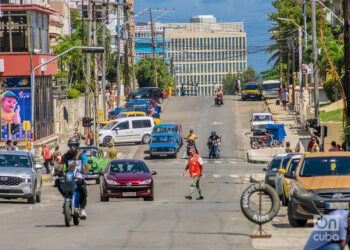There, in the Cuban semi-desert, in the East, where the sun is so strong that you have to run to avoid burns, we were on the trail of a man without whom many baseball teams on this island would face some major problems. We are talking about Eliécer Ortiz Lores, a carpenter whose magic hands turn logs into bats for sluggers.
His workshop is in Imías, a municipality south of Guantanamo. From there, with the help of a young man named Nelson, he manufactures and "exports" to the provinces of Santiago de Cuba, Granma, Holguin, Las Tunas, Pinar del Rio and Villa Clara, what he calls "my art". He is self-employed.
"I started to make bats empirically, since they replaced aluminum bats for wooden ones the National Series (1999), first with the purpose of helping the players of the municipality, personal friends, then I extended the help to all the team," he recalls amid the noise made by the power saw that his assistant, insistently, operates.
Eliécer’s carpentry is small and, of course, made of wood. Bats hang from the ceiling like a clothesline. Saws, auger, a wood lathe and hand sander, are some of the tools he uses.
What is so special about his bats that people come from afar to buy them? We asked the carpenter and he, smiling at the question, replies:
"The interest in my product is due to its quality, the country buys them abroad but they split easily because of the type of wood they are made of, I work with blue Majagua, a tree we find here in Imías."
The blue Majagua is not a rare tree. In fact, its wood, of beautiful color, medium-hard, durable and easy to mold is globally used for making sports goods, fine furniture and for crafts.
“Even members of the National Baseball Commission have visited my house and in 2012 they even brought some instructions for making implements. For example, this season, the diameter of the bat is less than before," he adds.
When we showed up at his business, Nelson and Eliécer were cutting timber and used, almost like a costume, masks that protect the mouth and nose from wood dust. They were also protected with goggles, to avoid the shots of sawdust.
Without much protocol, instantly, the humble creator said how difficult it is to achieve a good bat: "The complexity ranges from selecting the wood to the drying treatment, steps to cut and mark the selected piece, machining to shape it and then then sanding, polishing and finally placing the stamp that identifies them, but for me, the most complicated part is to achieve the final product."
He also confesses that, currently, his production is low because he lacks raw materials and has problems with transportation, but even so the demand increases.
"I get requests from 20 to 80 bats and even more, depending on customer needs, both from athletes, coaches or parents.”I don’t only make them for the major championship, there are some that during the process crack or develop a slump, these are useless for the first category, however, I use the wood, I decrease the size and this way they can be used by children or youth tournaments," he concludes.
There are not many carpenters as knowledgeable as Eliezer Ortiz Lores in in this kind of craft. That becomes evident in the fact that he was one of the big winners of the fourth National Forum Generalization, a highly valued by the Cuban Institute of Physical Education, Sport and Recreation (INDER) event.
But he is not one who is dedicated to address the material needs of the national sport. So where do the Cuban bats come from?, from both the national sports industry and private workshops like this one where innovation, always close to the surface, allowed to overcame the shortages of the Special Period in the 1990s and still boost and materialize the dreams of a home run.










